GlobalFoundries to Get $1.5 Billion in CHIPS Funding
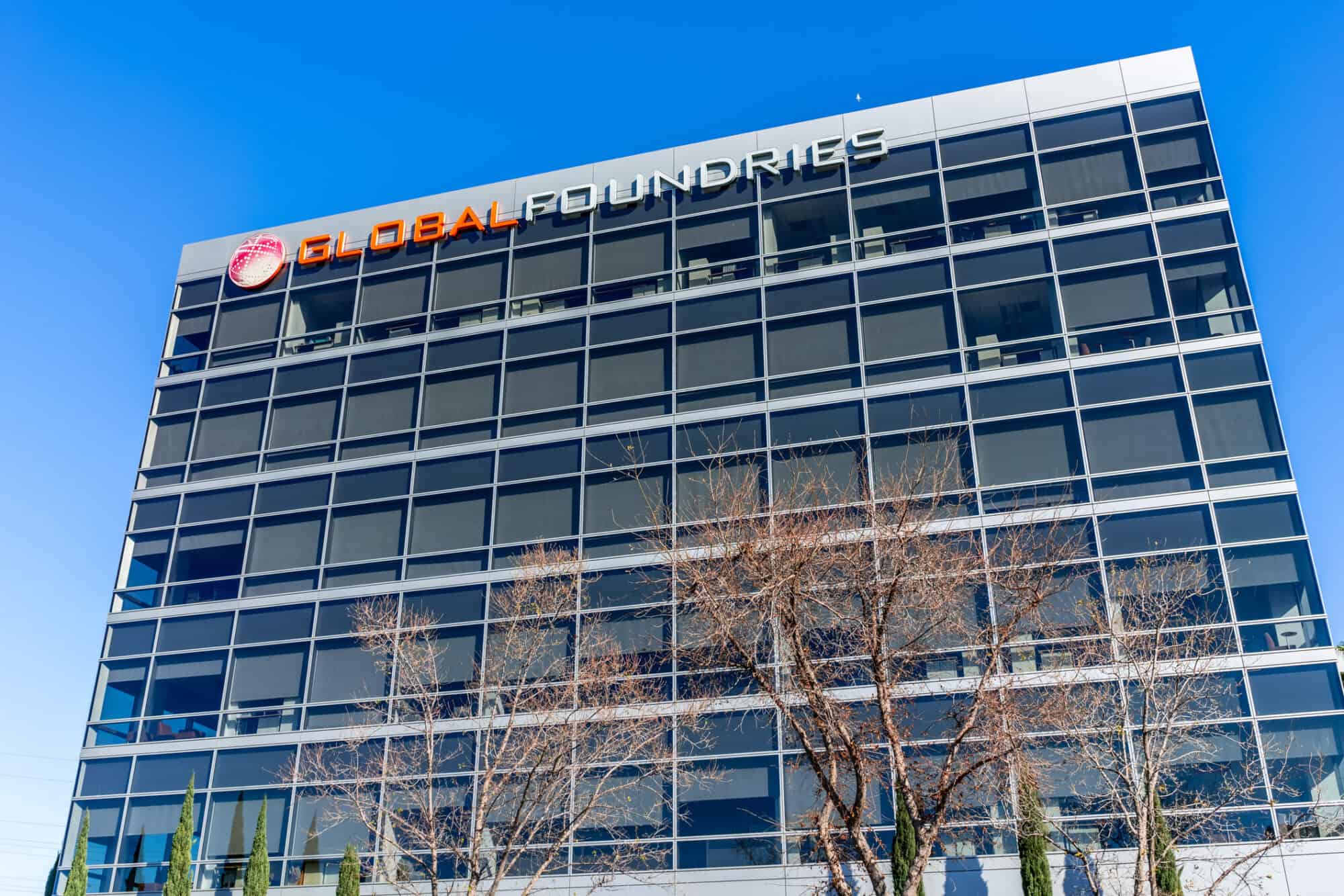
Semiconductor maker GlobalFoundries Inc. will be the first recipient of funding under the NAM-supported 2022 CHIPS and Science Act, CNBC reports.
What’s going on: “The U.S. government is awarding $1.5 billion to GlobalFoundries to subsidize semiconductor production, the first major award from a $39 billion fund approved by Congress in 2022 to bolster domestic chip production.”
- The Malta, New York–based GlobalFoundries—the largest U.S. manufacturer of customized semiconductors and the world’s third-biggest chipmaker—plans to use the funds to build a new chip-production facility in its hometown and expand existing facilities there and in Burlington, Vermont.
- The Malta facility will manufacture high-value semiconductors not currently produced in the U.S., Commerce Secretary Gina Raimondo said.
- In addition to the grant, the federal government is also offering GlobalFoundries $1.6 billion in loans.
Why it’s important: “The chips that GlobalFoundries will make in these new facilities are essential chips to our national security,” Raimondo said on Sunday, adding that the “agency is in active talks with numerous applicants and expects to make several announcements by the end of March.”
- In January, Commerce announced it was awarding defense contractor BAE Systems $35 million under the CHIPS Act.
Our role: The NAM—which helped secure several manufacturing priorities in the final CHIPS Act legislation—welcomed the news.
- “Congratulations to [GlobalFoundries]!” the NAM wrote in a social post Monday. “The NAM-championed CHIPS and Science Act is strengthening manufacturing in the U.S. We will continue to work with Congress and the White House to enact permitting reforms that will help speed the construction of these vital projects.”
NAM to House: Overturn Air Standard
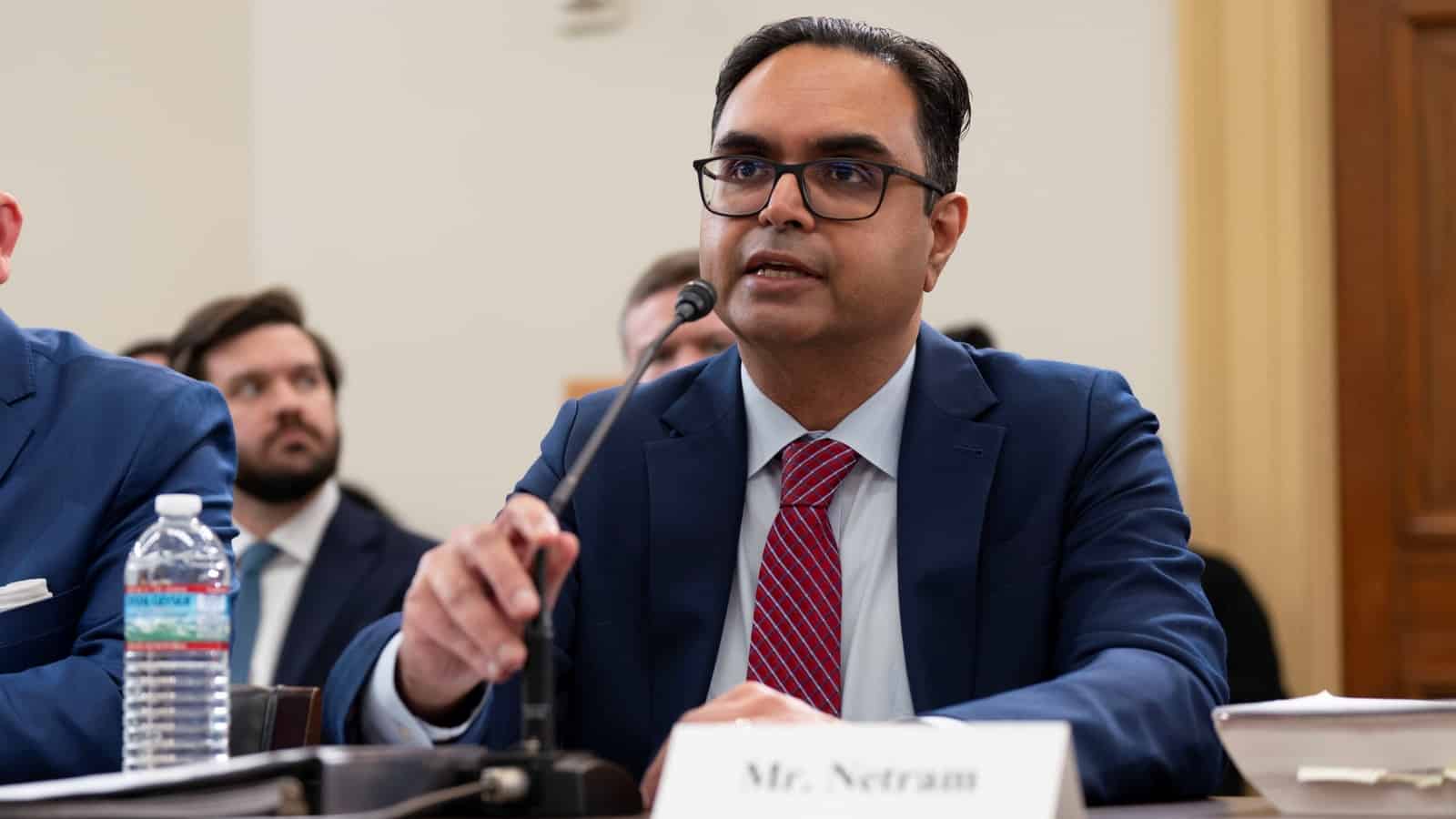
The Environmental Protection Agency’s recently finalized standard for particulate matter (PM2.5) will hamstring U.S. economic growth, job creation and competitiveness—and it must be reversed, the NAM told the House Thursday.
What’s going on: “The EPA’s unworkable PM2.5 standard … of 9 [micrograms per cubic meter of air] is in line with background levels of particulate matter in many parts of the country,” NAM Managing Vice President of Policy Chris Netram told committee members during “Safeguarding American Prosperity and People’s Livelihoods: Legislation to Modernize Air Quality Standards,” a hearing of the House Energy and Commerce Subcommittee on Environment, Manufacturing and Critical Materials.
- “In other words, the standard is now so low that companies will be expected to reduce their emissions below what naturally occurs.”
- The result of an overly stringent National Ambient Air Quality Standards level: Large swaths of the U.S. will be forced into “nonattainment” status, making permitting for critical infrastructure nearly impossible and all but guaranteeing job cuts, not growth, Netram said in his testimony, which Bloomberg (subscription) covered.
Why it’s important: A particulate matter standard of 8 micrograms per cubic meter of air—only slightly below the newly finalized level—would result in a loss of up to $200 billion in economic activity and almost 1 million jobs, according to a recent NAM study.
- As far as global competitiveness is concerned, the new limit effectively cuts America off at the knees, Netram continued. “Europe’s current PM standard is 25; China’s is 35. If we want the next manufacturing dollar to be spent in America rather than abroad, a standard of 9 is simply not feasible.”
What should be done: Lawmakers should introduce a Congressional Review Act resolution to overturn the new standard as soon as possible, Netram urged. The NAM also highlighted key NAAQS reform policies Congress is considering:
- Extend the EPA review period to 10 years.
- Allow the EPA to count wildfire mitigation as exceptional “rather than holding manufacturers accountable for PM they can’t control.”
- Require the EPA to consider the economic effects of a tightened standard.
NAM: Regulatory Onslaught Disproportionately Hits Small Manufacturers
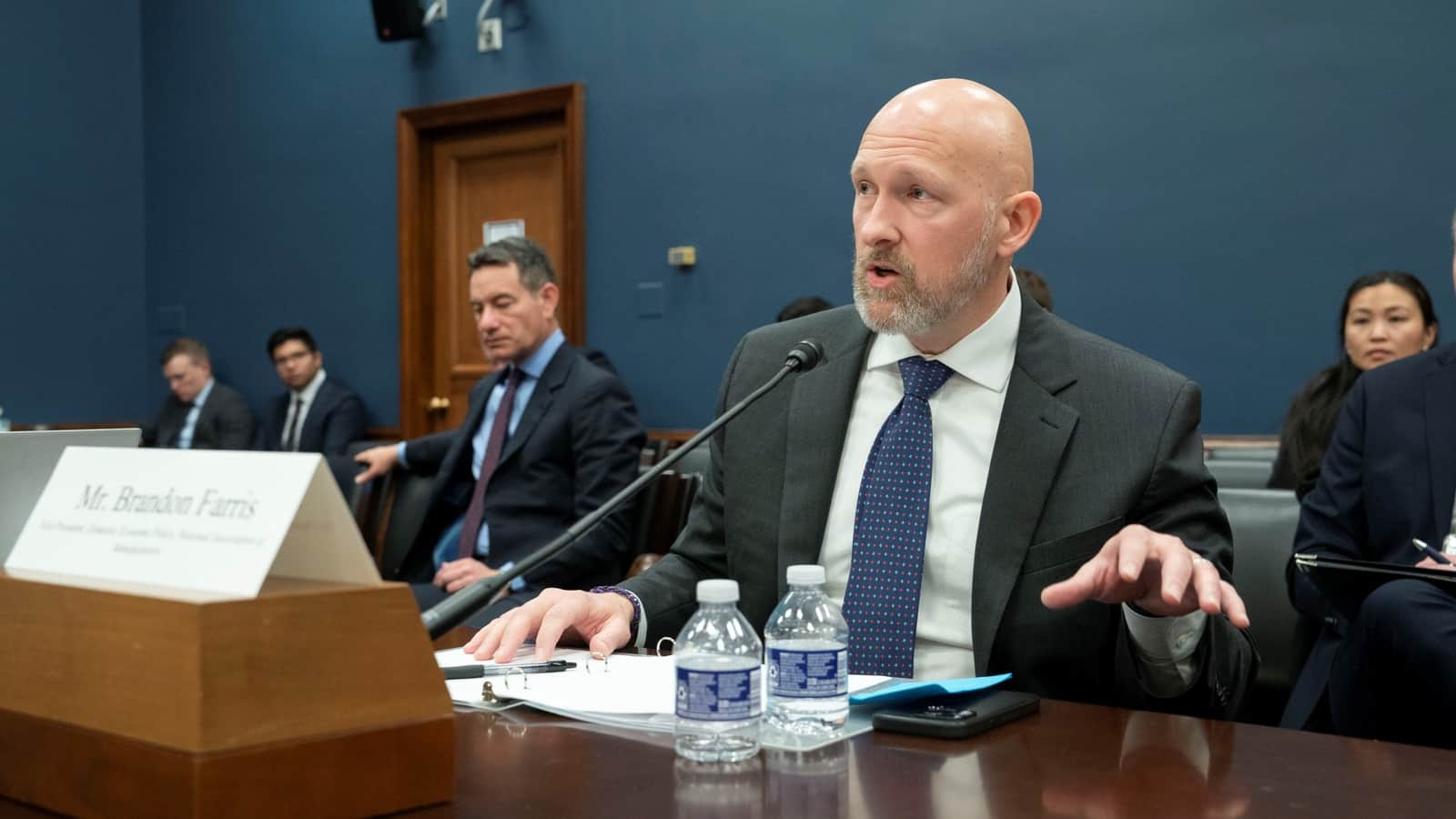
Small businesses are a critical part of both manufacturing and the U.S. economy at large, but the federal government’s costly regulatory onslaught is putting their continued existence at risk, the NAM told House lawmakers Wednesday.
What’s going on: “In the manufacturing sector, the majority of firms are small,” NAM Vice President of Domestic Policy Brandon Farris told the House Committee on Small Business during the hearing “Burdensome Regulations: Examining the Impact of EPA Regulations on Main Street.”
- “These firms are the backbone of the manufacturing supply chain, often producing key components for larger firms … [but] manufacturing faces significant headwinds in the form of the cost, complexity and uncertainty associated with overreaching and burdensome federal regulations.”
Why it’s important: The seemingly endless conveyor belt of new federal rules for the industry is costing manufacturers “shocking” amounts, disproportionately imperiling manufacturers—small ones in particular, Farris continued.
He cited NAM data finding that:
- The federal cost of regulations for manufacturers in 2022 was roughly $350 billion, a 25% increase from 2012; and
- The average manufacturer in the U.S. pays $29,100 per employee per year to comply with federal rules, while for the average small manufacturer, that price is $50,100.
Where it’s coming from: Farris cited other recent examples of onerous federal rulemaking, including:
- The Environmental Protection Agency’s recently finalized update to the National Ambient Air Quality Standard from 12 micrograms per cubic meter of air to 9 micrograms, a level approaching naturally occurring levels in many parts of the U.S., according to Farris, and one that “will make manufacturing in the U.S. less competitive globally”;
- The Department of Energy’s recent freeze of liquefied natural gas export permits, which, given increased European reliance on U.S. LNG since the start of Russia’s war in Ukraine, risks “leav[ing] our allies [and] our manufacturers in the cold”; and
- The Securities and Exchange Commission’s proposed climate disclosure rule, which “would increase manufacturers’ compliance costs dramatically, divert resources from job creation and growth, expose companies to increased liability, reveal proprietary and confidential information and ensnare wide swaths of the manufacturing supply chain.”
What must be done: Manufacturers aren’t asking legislators to cut corners, Farris said.
- Rather, they are seeking “regulatory certainty that can guide investment decisions and ensure that this country’s economic competitiveness is not outpaced or outflanked or overtaken by nations that do not share our values.”
To learn more about the high cost of overregulation, visit Manufacturers for Sensible Regulations, a coalition created by the NAM and members of the NAM’s Council of Manufacturing Associations and Conference of State Manufacturers Associations that’s intended to address the recent regulatory onslaught from federal agencies.
U.S. “Very Concerned” About Critical Minerals
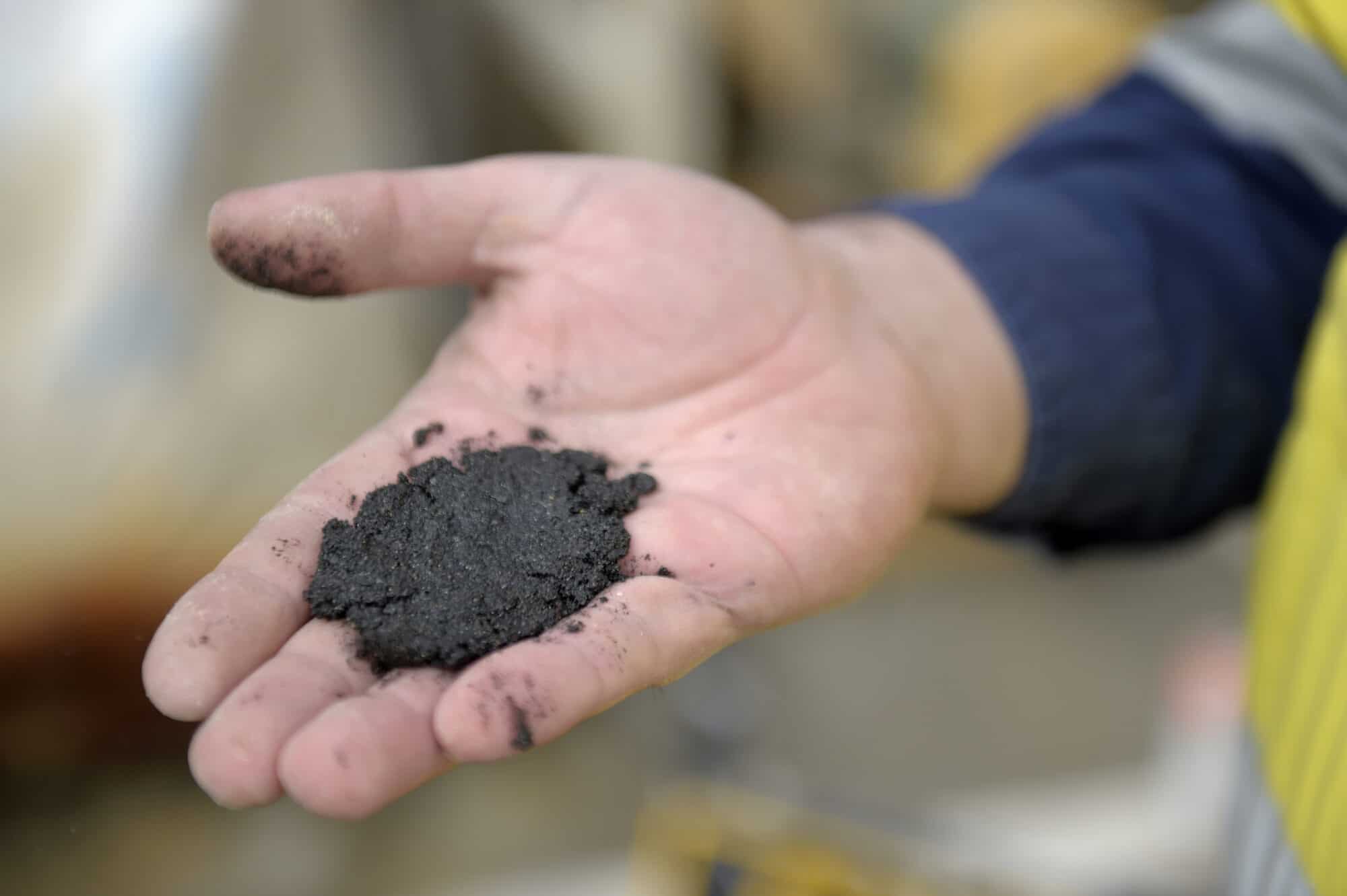
The Biden administration is “very concerned” about U.S. reliance on China for critical minerals, U.S. Energy Secretary Jennifer Granholm said Wednesday, according to CNBC.
What’s going on: China’s dominance in the world’s critical minerals supply chain is “one of the pieces of the supply chain that we’re very concerned about in the United States,” Granholm told the news outlet on the sidelines of the International Energy Agency’s 2024 Ministerial Meeting in Paris.
- China produces approximately 60% of all rare earth elements, which are critical to alternative-energy technologies, such as electric vehicles.
Why it’s important: “As part of a rapid uptick in demand for critical minerals, the IEA has warned that today’s supply falls short of what is needed to transform the energy sector,” according to the article.
What the administration is doing: Both production and processing of critical minerals “have to be addressed,” Granholm said.
- “And that’s why we are working very closely to ensure that we have identified which raw materials [or] critical minerals we need to be able to do our transition to a clean energy economy.”
The NAM says: “Other countries are taking all possible measures to develop domestic sources of critical minerals, and it should be a wake-up call to the U.S. that we need to be doing the same,” said NAM Vice President of Domestic Policy Brandon Farris. “We also need to reform our broken permitting system to get these projects operational as soon as possible.”
Trend of the Week: Sustainability Under Scrutiny

Manufacturers have long prioritized sustainability in their operations, but 2024 will bring new attention to the industry’s efforts. As we continue to explore the major manufacturing trends that will shape the industry this year, here’s what you need to know about this key development.
What manufacturers should do: Manufacturers looking to create strong sustainability plans to meet the expectations of regulators, boards and consumers should start by taking these steps, according to the NAM’s experts.
- Craft an overall organizational sustainability plan with metrics and reporting.
- Make changes and upgrades to support energy and resource efficiency, as well as reduce waste and emissions.
- Focus on sustainable products and packaging in addition to sustainable processes.
- Improve product reclamation or recycling in the circular economy.
Expert opinion: According to UL Solutions, company boards have a particularly key role to play in developing sustainability plans.
- “Boards of directors are bound by their fiduciary responsibilities to shareholders, but savvy directors also recognize that environmental and other ESG-linked risks and opportunities are vital to the long-term health of their organizations,” UL notes.
Resources for you: Check out these NAM resources to learn more about sustainability and compliance:
- NAM Energy will connect you with an adviser to create an energy management strategy that will help you cut costs and reduce your environmental impact.
- This podcast from Milliken & Company’s director of research, compliance and sustainability is an excellent case study for manufacturers seeking to remove or remediate PFAS chemicals.
- Dig into the NAM’s extensive collection of policy explainers, on everything from the Environmental Protection Agency’s regulation of particulates to the Securities and Exchange Commission’s regulation of climate disclosures.
Read the full 2024 trends report here.
Timmons Talks Trade, Tariffs, Democracy in Washington, D.C.
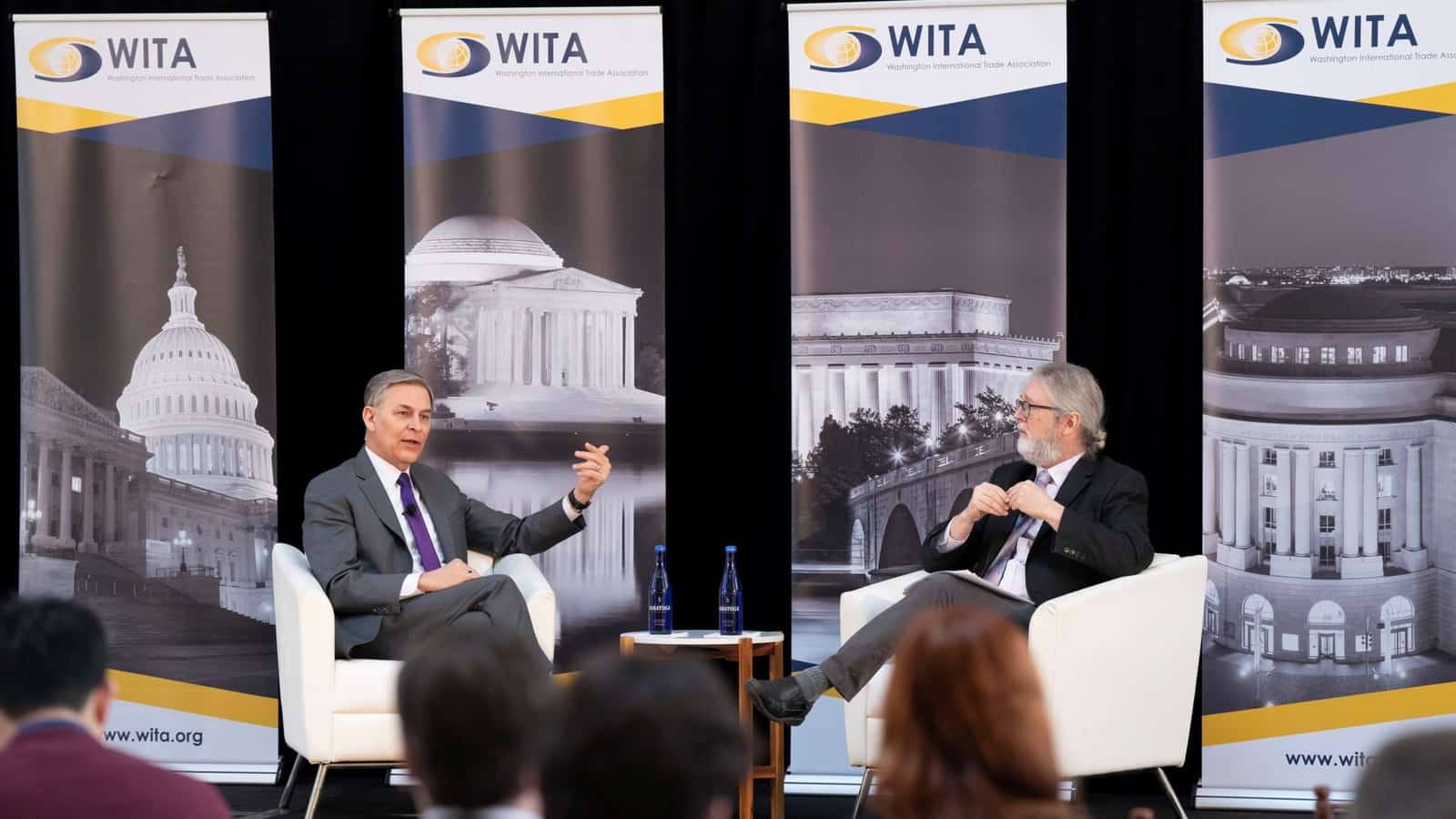
U.S. competitiveness on the world stage, trade agreements, intellectual property, democracy and regulatory certainty—these were just some of the topics NAM President and CEO Jay Timmons covered in a Tuesday interview with POLITICO’s Doug Palmer during the 2024 Washington International Trade Conference.
- The meeting was attended by senior U.S. trade officials and foreign ambassadors and hosted by the Washington International Trade Association in Washington, D.C.
Safeguarding IP: With the World Trade Organization’s 13th Ministerial Conference coming up later this month, Timmons discussed the damage that would result from one of the meeting’s expected agenda items: an expansion of a 2022 TRIPS waiver on IP rights to include COVID-19 therapeutics and diagnostics.
- “Intellectual property is truly the lifeblood of manufacturing,” said Timmons, who met with WTO Director-General Dr. Ngozi Okonjo-Iweala and WTO Deputy Director General Angela Ellard in Geneva last March to discuss the waiver.
- Manufacturers “work hard, and it’s always been kind of a given from the U.S. perspective that intellectual property protections would be front and center. … Obviously, we want to facilitate the growth of manufacturing in other areas of the world, too. But … [it] is a giant leap too far if therapeutics and diagnostics are included in the waiver.”
- American agreement to the expanded waiver, Timmons said, would be tantamount to the federal government telling manufacturers in the U.S., “By the way, we want you to invest in developing more innovations here in this country if we’re just going to turn around and give them away.”
Trade and tariffs: If the U.S. wants to remain competitive, we must negotiate a trade agreement now—and pass the Miscellaneous Tariff Bill, Timmons told Palmer.
- “Trade is really the recipe for peace and the recipe for working together harmoniously,” he said. “We’d like to see more trade agreements. We haven’t seen one negotiated here in the United States for over 10 years—and the rest of the world, quite frankly, is eating our lunch when it comes to negotiating these agreements.”
- The U.S., which has been operating without an MTB for more than three years, “need[s] MTB to not just meet our economic goals and not just feed the supply chains of manufacturers, but also to meet our national security objectives.”
Democracy vs. autocracy: Timmons—who last July led the American business community delegation to Cancun, Mexico, for meetings ahead of the third U.S.–Mexico–Canada Agreement “Free Trade Commission”—stressed the importance of the USMCA to underpinning democratic values worldwide.
- “This agreement is incredibly important to our national security, and it is important to our place in the world,” Timmons continued. “We need to expand the relationship, whether it’s trade or other relationships here in North America, and we need to embrace the relationships and our allies around the world—in Europe and Australia and New Zealand and Japan and other areas—because we are facing a choice … between free market economies and democracies and command economies and autocracies, and I want to strengthen the former, not allow the latter to bloom.”
Other needs: Timmons talked about other manufacturing priorities for the current administration and the next.
- “We need regulatory certainty that gives business leaders the ability to plan for the future,” he said. “We [also] need to invest in workforce incentives. All of those and infrastructure, which we have done, and we continue to do. You can’t just open up the trading system and not expect capital to flow outside of our borders if you don’t have the right policies internally.”
NAM in the news: Read POLITICO Pro’s coverage of the conference and Timmons’ interview here and here.
Rinnai Fights for Efficient Water Heaters
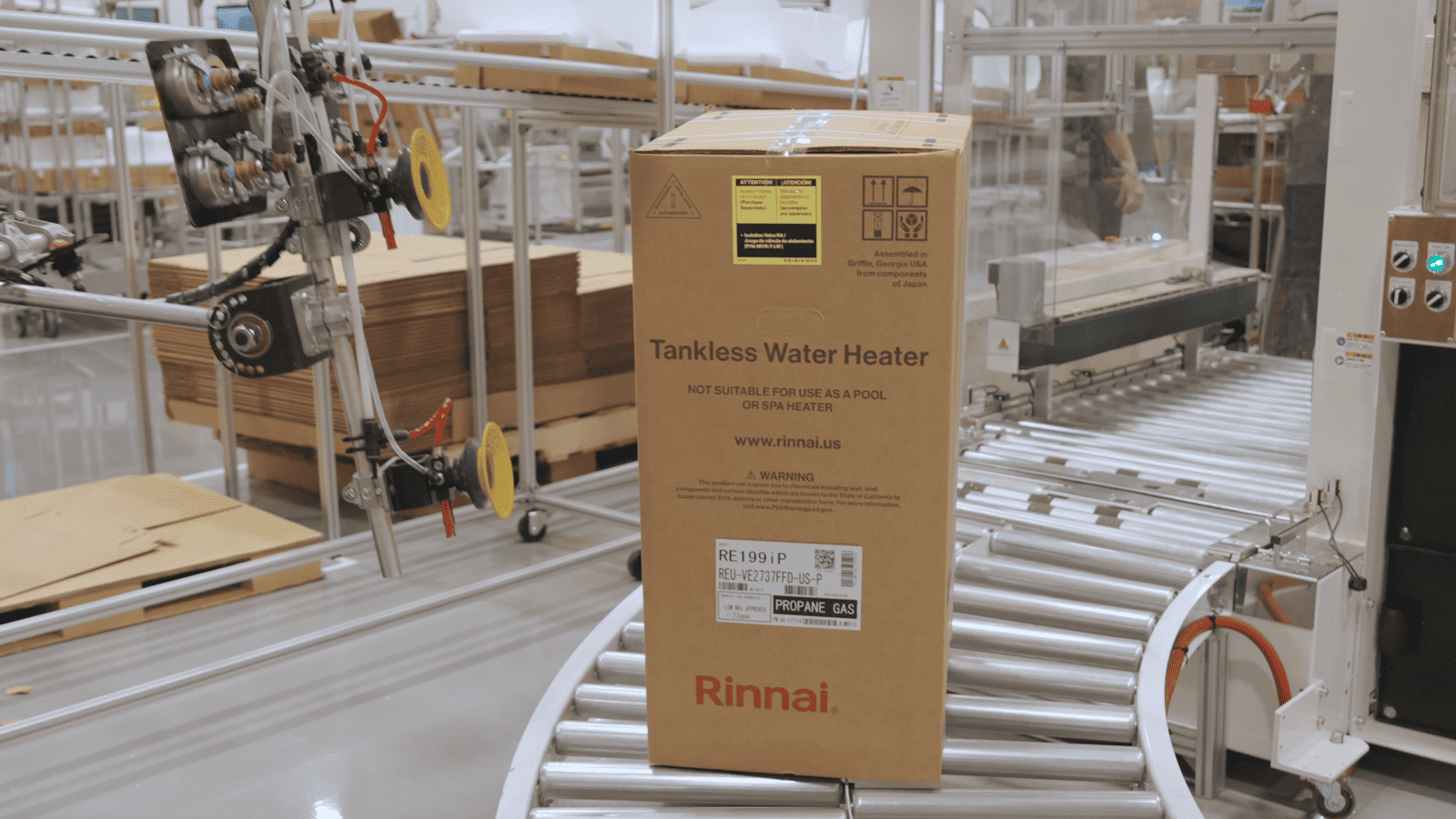
For nearly 50 years, Rinnai America Corporation has been selling innovative products in the United States. But as the Department of Energy prepares to unveil new rules in April, the water heater manufacturer is bracing for a big—and unnecessary—setback to its operations.
The background: There are a lot of water heater options on the market, and consumers must make a few key choices.
- First, they can choose between electric and gas heaters.
- Second, if they choose a gas heater, they can select one with a tank or one without.
- Finally, even tankless gas heaters come in two forms: condensing or noncondensing. Condensing heaters are used generally in colder environments, while noncondensing units are better for warmer climates.
The rule: The Department of Energy has proposed regulations on gas water heaters that would go into effect in 2029.
- However, the proposed efficiency requirements for tankless gas water heaters are so strict that noncondensing tankless units would not qualify—removing a cost-effective option from the market, and one that is in fact comparatively efficient.
- “The DOE is not taking into consideration what is best for the consumer, best for the industry and best for the environment overall,” said Frank Windsor, president of Rinnai America Corporation. “This is a shortsighted decision that doesn’t take into account the ramifications.”
The consumer impact: The DOE’s rule would restrict consumer choice severely by creating a de facto ban on noncondensing tankless heaters.
- “Consumers are getting hurt,” said Windsor. “Around 20% of consumers want tankless options”—including noncondensing tankless heaters.
The industry effect: Rinnai invested $70 million in 2022 in a new Georgia facility that makes noncondensing tankless gas heaters.
- “We built this new facility to make tankless water heaters that give consumers significant energy efficiency at a low price—and now the DOE is saying that, by 2029, you can’t make noncondensing units anymore,” said Windsor.
- “We’ve got close to 200 people working for us in Griffin, Georgia, so it impacts a lot of people.”
The innovation loss: According to Windsor, the rule is also counterproductive because it forces companies like Rinnai to reallocate funds that otherwise could go toward product innovation.
- “We’re going to have to spend money to retool that plant, and then we’ll get taxed on the capital for the plant that we can’t use anymore—and that’s all money that we would’ve spent on product innovation,” said Windsor.
The last word: “Why would you eliminate the availability of a cost-effective, efficient product and force the consumer to buy a more expensive option?” asked Windsor.
Learn more about the high costs of regulations, and the extreme burden on small manufacturers, in this recent NAM study. And check out Manufacturers for Sensible Regulations, a coalition created by the NAM and members of the NAM’s Council of Manufacturing Associations and Conference of State Manufacturers Associations, which is intended to address the regulatory onslaught coming from federal agencies in recent years.
NAM to Senate: LNG Pause Harms Allies, Security
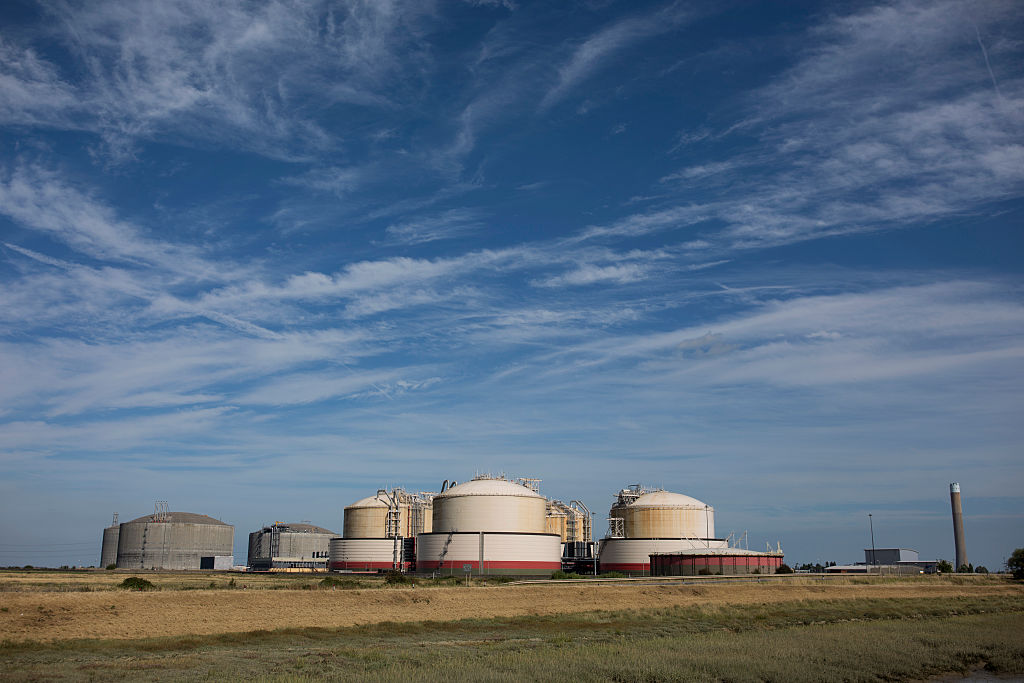
A senior Department of Energy official told the Senate at a Thursday hearing that the Biden administration’s recent decision to pause liquefied natural gas export permits will neither affect supplies to U.S. allies nor jeopardize international energy security, Reuters reports.
- Yet, data supplied by the NAM to the Senate Committee on Energy and Natural Resources ahead of the hearing shows otherwise.
What’s going on: “‘It will not affect our ability to supply our allies,’ [U.S. Deputy Energy Secretary David] Turk said, adding that it does not affect already approved exports.”
- “A U.S. official earlier on Thursday told Reuters ‘I don’t think we’re concerned at all about our ability to meet (European) demand.’”
- The Senate hearing on the LNG permit export pause follows a House hearing on the same topic earlier in the week.
However … Since the 2022 start of Russia’s war against Ukraine, Europe has come to rely increasingly on the U.S.—the world’s top LNG exporter—for natural gas, the NAM told lawmakers.
- “Europe is currently the primary destination for U.S. LNG, accounting for 67% of total exports in the first six months of 2023,” NAM Managing Vice President of Policy Chris Netram said. “For comparison, 64% of the United States’ global LNG exports in 2022, and 23% of American exports in 2021, went to the European Union. … [T]he war in Europe [even] forced diversions of LNG cargo that was bound for Asia.”
“Wrong direction”: Sen. Joe Manchin (D-WV), who called the hearing, said freezing liquefied natural gas export permits is “the wrong direction for our country,” whose LNG exports are helping allies in need.
- “Shockingly, in the White House statements [regarding the permit freeze], there is no reference at all to the crisis created by Putin’s invasion of Ukraine, to the growing instability in the oil-and-gas-producing regions in the Middle East following Hamas’ attack on Israel or to any other crisis that U.S. LNG exports can help address.”
Environmental concerns: Though “Turk said the review will also consider pollution impacts on people living near LNG facilities … [and] ‘take into account all of the health environmental impacts,’” CNBC reports, the permit freeze could “benefit producers of energy sources with significantly higher emissions than [U.S.] LNG,” Netram continued.
- “According to the DOE, Russian exports to Europe had 40% more global warming potential than U.S. LNG across 20 years. Russian gas also had 20% more global warming potential than European coal. Clearly, U.S. LNG exports are better for the environment and help the U.S. and our allies achieve our climate goals.”
What’s next: The moratorium “could face court challenges,” according to CNBC. “A group of 23 Republican state attorneys general in a letter sent to the administration on Tuesday [said] that the Biden administration’s pause is illegal, arguing that the natural gas law requires the DOE to approve LNG exports unless it shows that doing so would not be in the public interest.”
EPA Releases Punishing New Air Standard

In a move that could have a significant negative impact on manufacturing in the U.S., the Environmental Protection Agency on Wednesday finalized an update to the federal air quality particulate matter standard.
What’s going on: The EPA announced a significantly stricter National Ambient Air Quality Standard for fine particulate matter (PM2.5), lowering the level from 12 micrograms per cubic meter of air to 9 micrograms.
The background: America’s air is actually cleaner than ever, due in large part to manufacturers’ commitment to innovation.
- In fact, the EPA recently reported that PM2.5 concentrations have declined by 42% since 2000.
- Yet, last year, the agency signaled that it was considering lowering the standards even further, to as low as 8 micrograms per cubic meter—and while the NAM and manufacturers spoke out against the move, the EPA moved ahead.
The problem: If enacted, such an aggressive standard would make it far more difficult and costly for manufacturers to operate in the United States.
- It would put huge swaths of the country in “nonattainment,” meaning that they would not meet ambient air quality standards. Factories in nonattainment areas would be unable to operate. Permitting would become almost impossible, and economic development would grind to a halt.
- A recent NAM-commissioned analysis by Oxford Economics found that a standard at this level could reduce GDP by nearly $200 billion and cost as many as 1 million jobs through 2031.
Our take: “The Biden administration’s new PM2.5 standard takes direct aim at manufacturing investment and job creation in direct contradiction to the president’s stated goal of strengthening manufacturing in communities all across America,” said NAM President and CEO Jay Timmons.
- And it will “mak[e] an already gridlocked permitting system further gridlocked” and discourage long-term investments by manufacturers.
Unfair disadvantage, tough choices: It would put the U.S. at a disadvantage with global competitors, too, Timmons added.
- “Manufacturers in America will also be hard pressed to make long-term investment plans domestically as our global competitors have set more reasonable goals. The EU standard is currently 25, and a proposal there would be to reach 10 by 2030. The UK has a target of 10 by 2040.”
- And it would require state and local officials to make difficult decisions about which critical infrastructure projects in their areas move forward, Timmons continued.
High cost, little impact: What’s more, the tightened rule won’t address the greatest sources of particulate matter, according to NAM partners the American Forest & Paper Association and American Wood Council.
- The “EPA’s rule delivers a devastating blow to U.S. manufacturing and the economy while doing nothing to address the largest sources of particulate matter, including wildfire smoke,” they said in a joint statement. “This unworkable air rule undermines President Biden’s promise to grow and reshore manufacturing jobs.”
- “This administration has set the PM2.5 NAAQS at near background levels, ensuring permit gridlock for most manufacturing sectors around the country, while failing to address 84% of overall PM2.5 emissions.”
Next steps: The NAM has spoken out repeatedly against this stricter regulation and will continue to call on Congress to reverse it.
NAM in the news: AFP, Associated Press, Fox News, Daily Caller and Newsweek all covered the NAM’s response to the finalized rule.
The last word: “The U.S. already has some of the strictest air standards in the world, and thanks to manufacturers’ innovation and leadership, some of the cleanest air and best environmental records,” Timmons concluded. “Manufacturers will consider all options to reverse this harmful and unnecessary standard, because it is our duty to stand against policies that hold our country back.”
EPA Releases Punishing New Air Standard

In a move that could have a significant negative impact on manufacturing in the U.S., the Environmental Protection Agency on Wednesday finalized an update to the federal air quality particulate matter standard.
What’s going on: The EPA announced a significantly stricter standard for fine soot, lowering the National Ambient Air Quality Standards for fine particulate matter (PM2.5) from 12 micrograms per cubic meter of air to 9 micrograms.
The background: America’s air is actually cleaner than ever, due in large part to manufacturers’ commitment to innovation.
- In fact, the EPA recently reported that PM2.5 concentrations have declined by 42% since 2000.
- Yet, last year, the agency signaled that it was considering lowering the standards even further anyway—and while the NAM and manufacturers spoke out against the move, the EPA moved ahead.
The problem: If enacted, such an aggressive standard would make it far more difficult and costly for manufacturers to operate in the United States.
- It would put huge swaths of the country in “nonattainment,” meaning that they would not meet ambient air quality standards. Factories in nonattainment areas would be unable to operate. Permitting would become almost impossible, and economic development would grind to a halt.
- A recent NAM-commissioned analysis by Oxford Economics found that a standard at this level could reduce GDP by nearly $200 billion and cost as many as 1 million jobs through 2031.
Our take: “The Biden administration’s new PM2.5 standard takes direct aim at manufacturing investment and job creation in direct contradiction to the president’s stated goal of strengthening manufacturing in communities all across America,” said NAM President and CEO Jay Timmons.
- And it will “mak[e] an already gridlocked permitting system further gridlocked” and discourage long-term investments by manufacturers.
Unfair disadvantage, tough choices: It would put the U.S. at a disadvantage with global competitors, too, Timmons added.
- “Manufacturers in America will also be hard pressed to make long-term investment plans domestically as our global competitors have set more reasonable goals. The EU standard is currently 25, and a proposal there would be to reach 10 by 2030. The UK has a target of 10 by 2040.”
- And it would require state and local officials to make difficult decisions about which critical infrastructure projects in their areas move forward, Timmons continued.
High cost, little impact: What’s more, the tightened rule won’t address the greatest sources of particulate matter, according to NAM partners the American Forest & Paper Association and American Wood Council.
- The “EPA’s rule delivers a devastating blow to U.S. manufacturing and the economy while doing nothing to address the largest sources of particulate matter, including wildfire smoke,” they said in a joint statement. “This unworkable air rule undermines President Biden’s promise to grow and reshore manufacturing jobs.”
- “This administration has set the PM2.5 NAAQS at near background levels, ensuring permit gridlock for most manufacturing sectors around the country, while failing to address 84% of overall PM2.5 emissions.”
Next steps: The NAM has spoken out repeatedly against this stricter regulation and will continue to call on Congress to reverse it.
NAM in the news: AFP, Associated Press, Daily Caller, Fox News and Newsweek all covered the NAM’s response to the finalized rule.
The last word: “The U.S. already has some of the strictest air standards in the world, and thanks to manufacturers’ innovation and leadership, some of the cleanest air and best environmental records,” Timmons concluded. “Manufacturers will consider all options to reverse this harmful and unnecessary standard, because it is our duty to stand against policies that hold our country back.”
